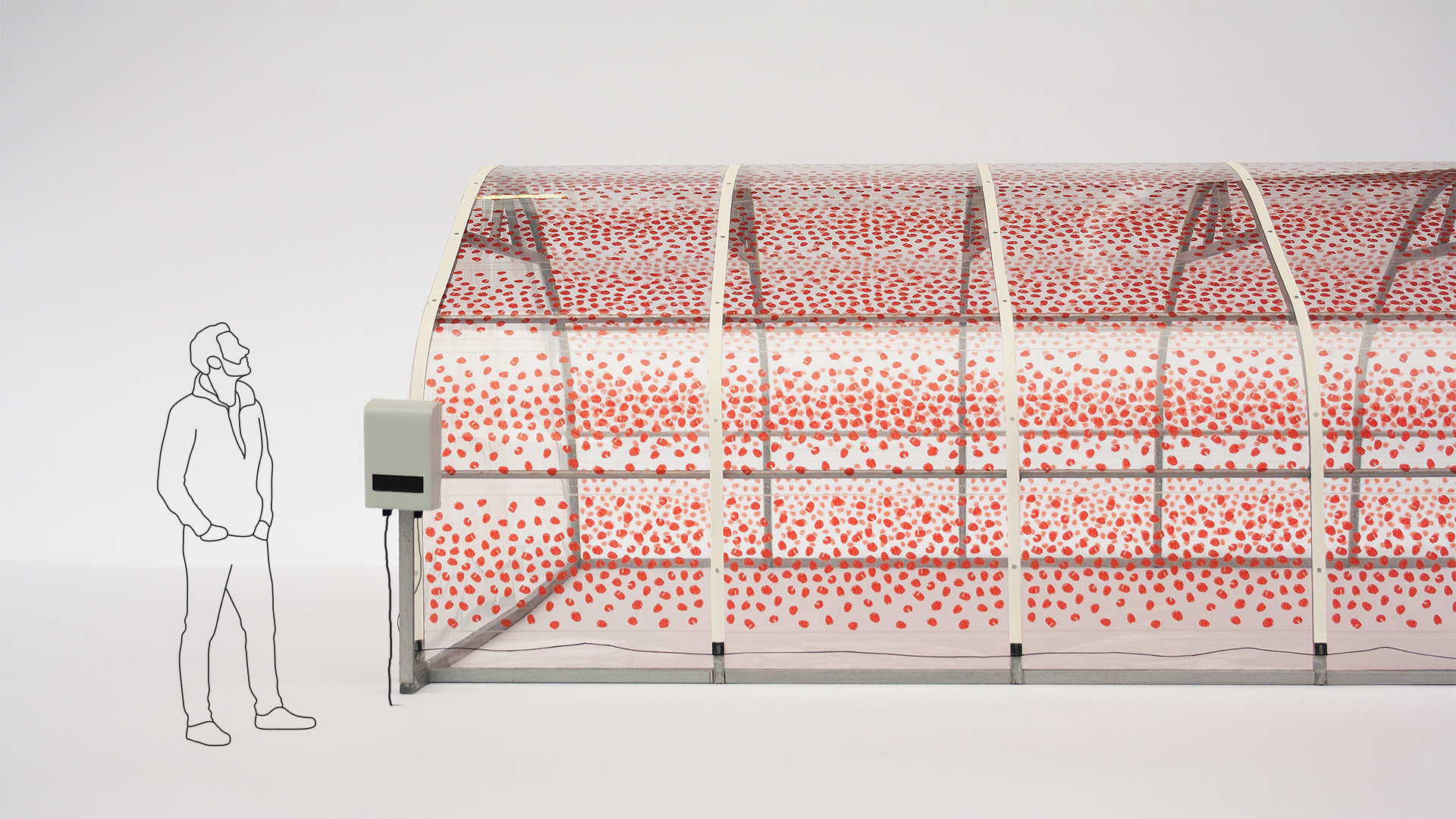»Sun-exposed land is needed for agriculture and for solar energy, leading to competition for land. Hélène Fontaine's 2harvest project represents a forward-looking solution to this challenge. It uses organic photovoltaic cells on greenhouse foils, enabling the dual use of land. The energy generated can be fed into the grid.«
Dr. Bettina Rechenberg

Three questions for Hélène Fontaine
How did the idea for 2harvest – OPV greenhouse foil come about?
Innovative projects in agriculture and the solar sector often operate at the level of small pilot projects or even at the laboratory level. In reality, the use of unfathomably large surface areas plays a role in both sectors. The basic idea with 2harvest was to scale up and recombine existing technologies in order to provide a demonstration of a large-scale application possibility for solar panels that is not in competition with land for food production.
What was your personal highlight in the development process for 2harvest – OPV greenhouse foil? Was there a low point?
PET foil is much stiffer than the PE foil commonly used for foil greenhouses. The latter behaves more like textile and can be installed in continuous, long sheets. As such, the difficulty was finding a way to install the PET foil over large areas without damaging the integrated solar cells. Finding a solution to this problem, namely dividing the foil into individually installable strips, was the positive turning point for the concept.
Where do you see your project in five years?
To date, 2harvest is a utopian concept. I do not necessarily see my project as THE solution. Rather, it is meant to demonstrate that new photovoltaic technologies can find application in already existing infrastructures. I hope that in five years, organic solar cells can be manufactured and used on a larger scale, so that concepts like mine can become a reality.
